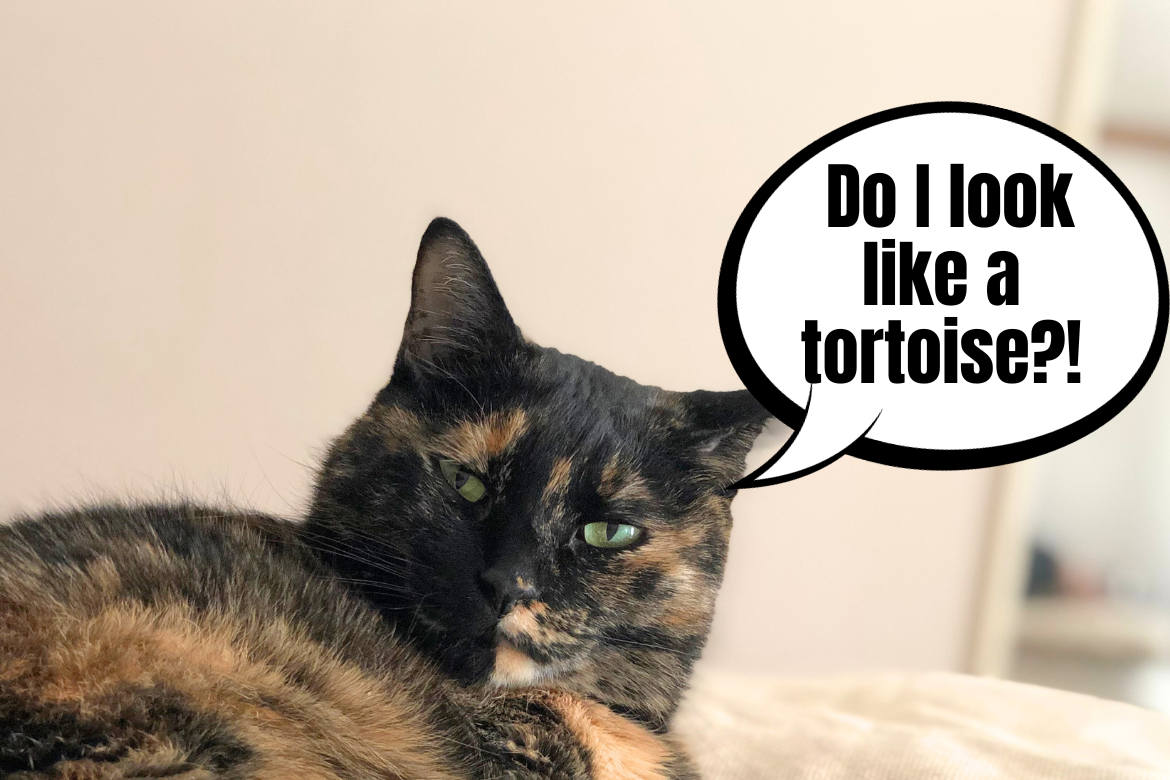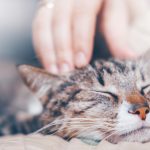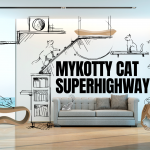It’s one of the most unique coat patterns among domestic cats. It can even be compared to human fingerprints – there are no two identical tortoiseshell cats in the world. Each individual with this exceptionally colorful fur variation is one of a kind, adding a touch of mystery to these beautiful representatives of the feline species. But the unique combination of fur colors is not the only curiosity that tortie cats hide. Do you want to get to know these cat beauties better, fabCats? Come and explore with us what’s going on under the fur 🙂
Who are you, tortie cat?
Contrary to what you may find sometimes on the internet, a tortoiseshell cat is not a breed but a unique and rare coat pattern found in both purebred and standard domestic cats. It owes its name to turtles and tortoises and their patterned shells, especially the hawksbill sea turtle – the fur of a tortoiseshell cat resembles the color and pattern of the shells of these marine giants. Although today the “tortoiseshell pattern” is made of plastic, and the turtles themselves are an endangered species, the unique coat pattern is doing really well in the cat world. Cats with colorful fur are less common than cats with other coat patterns, but there is no need to worry about the disappearance of these exceptional individuals from the cat population.
And what do tortoiseshell cats look like? And how do they differ from tricolor cats, with which they are often confused? The tortoiseshell pattern is a mix of two colors: orange (in various shades) and black (in various shades). We can find both light-colored cats in shades of beige and gray, and almost black cats with interspersed spots of orange fur. And each of them will be unique! How about adding a bit of white fur to the mix? Even if there is not much of it, we no longer refer to them as tortoiseshell cats but as tricolor or calico cats. Such a combination of coat patterns is also rare, making tricolor kittens highly valued among breeders.
A tortoiseshell male kitten? Now that’s a real rarity!
Tortoiseshell cats and tricolor cats are usually female – encountering a male cat with such a coat pattern is a miracle, all thanks to the unusual genetics of two-colored cats. Without delving into the highly scientific specifics of feline genetics, the culprit here is the X chromosome, which determines not only the cat’s gender but also its coat pattern. In the case of female cats, whose sex chromosomes are XX, more diverse coat pattern combinations are possible, including a combination of orange with black fur. In the case of male cats, whose chromosome combination is XY, the combination of orange and black is impossible. The only case in which we will encounter a male tortoiseshell or calico is the occurrence of a genetic mutation and an additional sex chromosome, namely the combination XXY. However, such a male cat would be infertile and potentially susceptible to other diseases associated with an unusual genetic mutation.
The genes of tortoiseshell cats also explain why the birth of a tortoiseshell kitten is really a matter of chance. Even if the cat’s mom is a tortoiseshell cat and carries the genes for orange and black fur, regardless of the coat pattern of the cat’s dad, her litter may contain kittens in different colors. The birth of a tortoiseshell kitten is always a surprise.
A purring talisman of happiness
Cats have been considered symbols of luck and prosperity in many cultures since ancient times, although sometimes some fur colors are treated as bad omens and harbingers of misfortune. However, tortoiseshell cats belong to the former group and are often seen as purring talismans of happiness and good omens. In Japan, sailors value them very much – tortoiseshell cats were believed to protect ships from sea spirits and ghost ships. In the USA, it is said that a tortoiseshell cat brings financial luck to the home. Why such beliefs? It is difficult to find a clear explanation, but due to the uniqueness of the tortoiseshell coat pattern in cats, their appearance among people was once considered a miraculous event heralding something good.
Does fur color go hand in hand with character?
When it comes to a cat’s character going hand in hand with its coat pattern, for many of you, fabCats, all the myths about ginger cats may immediately come to mind. However, it turns out that torties also have their reputation. This is mainly about the tortie strength, independence, stubbornness, and character, which one might simply call the “torttitude.” And yes, tortoiseshell cats can be assertive and playful, as evidenced by dozens of funny videos circulating online. But before we delve too deeply into cat stereotypes, it’s worth reaching for knowledge from experts in the field. Scientists from the University of California, after studying the relationship between the character of cats and their coat pattern, unequivocally stated that fur color does not directly affect a cat’s behavior. Even in the case of tortoiseshell cats.
So why such a belief among many cat owners? Well – every cat has its unique character traits, and it has been known for a long time that cats are creatures that can show their claws when needed. Torties are just unique enough in their appearance that when their behavior amuses owners, the recording quickly goes online, and from there, it’s a short way to developing certain stereotypes about these beautiful felines 🙂
What coat pattern are your cats, fabCats? Today on our Facebook profile, we are conducting a fur check – come and show us your purring companions → https://www.facebook.com/myKottypl/




